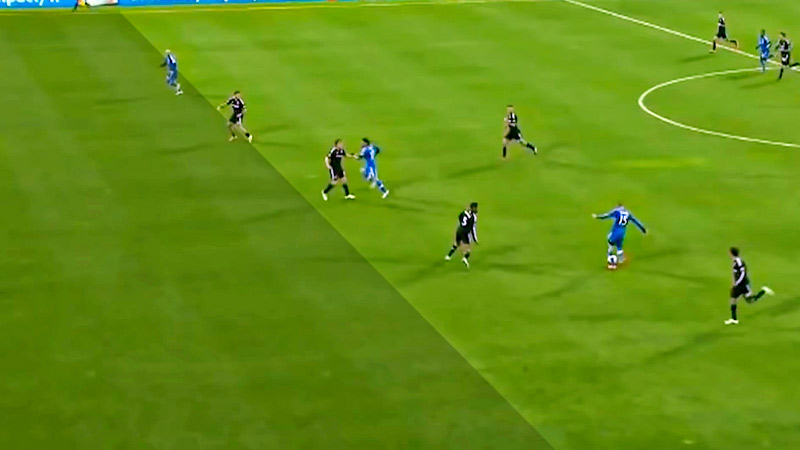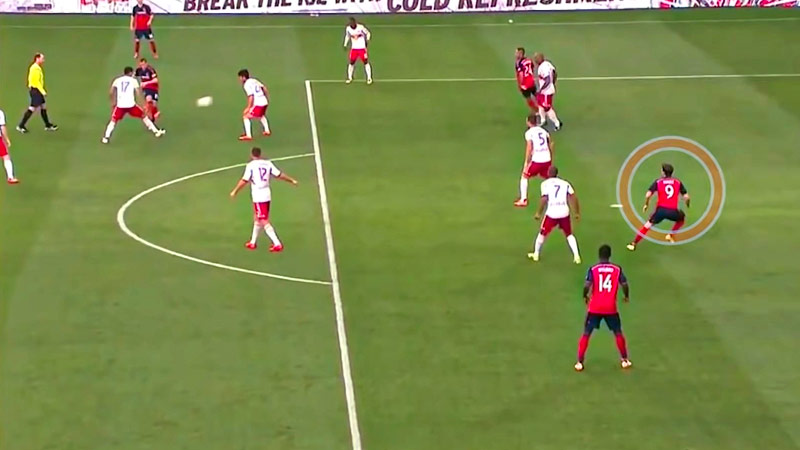Soccer, simply known as football is one of the most popular and favorite sports worldwide! As firmly as it may seem in terms of rules and regulations, the soccer offside rules are also something you shouldn’t be unaware of!
In fact, it is one of the most misunderstood and for some, confusing football rules to get! Sounds a bit demoralizing? Not at all!
Find out what Soccer Offside Rule is and why it is what it is! Today, we will learn everything about what Soccer Offside is, and how it’s implemented in the field.
Let’s figure it out together!
What Is Soccer Offside Position?
To learn what Soccer Offside Rule is, let’s start with the Soccer Offside position at first.
In football, a player will be in an offside position when he is near the opponent’s goal line given that,
1) He is closer than both the ball and the second-to-last defender (usually the last outfield player).
2) Both – the ball and the player are within the opponent’s half of the field.
By “when he is near the opponent’s goal line” we refer to the head, feet, or body of the player close to the line.
It is determined by the Law 11 of FIFA’s Law of the Game.
Now, what are the rules set for Soccer Offside? Keep reading and find out!
What Is Soccer Offside Rule?

You may find offside rules to be too complex at first sight. We will break it down into easy parts for you.
So, you just stand on the offside and it becomes an offense? No! It doesn’t work that way.
Being in an offside position alone is not an offense. You have to involve in active play. An offense will result in the offside position when,
- You are at an advantage at that position i.e. he receives a direct pass.
- You are interfering with an opponent’s ability to play the ball.
- Additionally, gain an advantage naturally from an opponent’s deliberate play or deflection (i.e. a save by the goalkeeper).
- You prevent an opponent from playing the ball by clearly blocking the opponent’s line of vision or challenging an opponent for the ball.
- You clearly attempt to play a ball that is close to an opponent.
Here’s the summary of when an offside position becomes an offense. You can get the details here. In short, the offside rule is established when the player is in the game and moving.
There have to be two opponent players including the goalkeeper between you and the opposition goal. Earlier, you could avoid an offside offence, with three defensive players between you and the opposition goal.
But now! That regulation has been modified throughout time.
Soccer Offside Offense Exceptions
It’s not always an offside even when you find yourself in scenarios mentioned above. Exceptions are always there.
Here are a few situations that exempt a player from being offside,
- When you are in an offside position but not actively involved in the play, or when you receive the ball from a goal kick, throw-in, or corner kick, it will not be offside for you.
- It is not offside when you receive the ball directly from a goal kick, corner kick, or throw-in.
- When you are passing backward and also close to the opponent’s goal line, it will not be an offside offense. Here, passing backward refers to cutting the ball back.
So, when a player is not considered on the offside, he will officially be onside and safe from a penalty.
Soccer Offside Rule: Decision Making
Ever since the introduction of VAR (Video Assistant Referee) in 2016, authorities conducted a second check on the offside offense.
The first one is done by the two linesmen – two assistants of the referee. They monitor the match from the sidelines of each pitch half.
To signal an offside offense, they instantly uphold a flag before or over the player committing the offside offense.
Here, some factors can influence the decision of the linesmen. They are,
- The offside position is judged based on timing. When a teammate plays the ball and intends to pass to the potential offside player, it will be an offside offense.
- The positions of the offside player, the second-to-last defender, and the ball at the time of the pass have been carefully evaluated and double-checked.
- It is up to the officials to determine whether the offside player was involved in active play and whether his presence there influenced the game.
The offside offense hasn’t been so good luck for the players. It has been the reason for controversy and frustration for viewers and officials too.
However, the frustration was reduced a lot with the help of technology to make the right decisions.
Most essentially, Video Assistant Referee (VAR) technology offers referees to review situations, including offside calls, with the help of video replays.
It has become much easier now to deliver the right results in combination with human and tech efforts.
Thus, the desperation caused by offside offense has been lessened down!
Is Offside Illegal?
Yes! Most offsides are illegal when a player fulfills all the criteria mentioned above. It was first finalized as football rules by the Football Association (FA) in 1883.
To answer, why it is illegal, we can say that, the rules were made to prevent the players from sneaking into the opposition’s goal and looking for unfair goal opportunities.
However, exceptions are there too, to prevent any entities from unethical approach toward any attacking player.
Last Words
We are almost at the end of our article. Rules are meant to be broken! But not when you are offside!
Any intentional offside attempt can result in a penalty if you are not careful. This is why, it is essential to be aware of the soccer offside rule and do the best for your team.
So, what do you think of Soccer offside? Let us know in the comment below. Also, share our article with your soccer friends and let them know about us.
Stay tuned with us for more on Soccer and your favorite sport.







